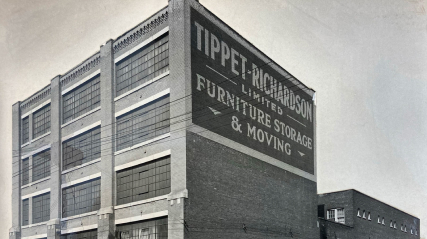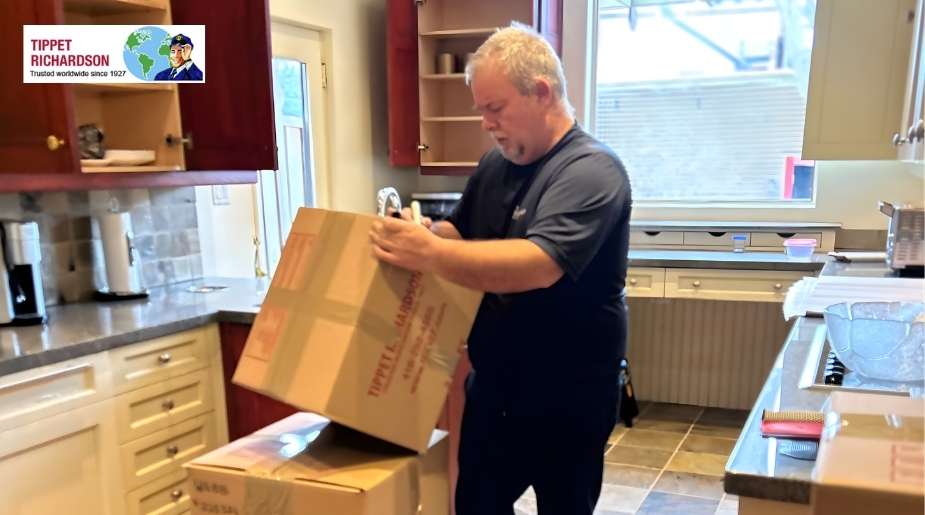Moving your office, be it a dynamic startup or a well-established corporation within the Greater Toronto Area (GTA), represents a pivotal moment. Similarly, relocating your family within this diverse and thriving region involves a significant life transition filled with both anticipation and logistical complexities. This meticulously crafted, in-depth guide serves as your trusted companion, offering a friendly yet highly professional roadmap to navigate your office moving GTA or family relocation in the GTA with unparalleled ease and efficiency. We deeply understand that a swift and trouble-free transition is paramount, allowing you to maintain business momentum or embrace your family’s new beginning without undue disruption.
Deciphering the GTA Moving Landscape: A Region-Specific Perspective
The GTA, a pulsating economic engine and a tapestry of diverse communities, presents a unique set of considerations when undertaking a move. From the intricate navigation of downtown Toronto’s high-rise corridors and stringent building regulations to the meticulous coordination of logistics across the sprawling network of suburban municipalities, a successful office moving or residential relocation demands a keen understanding of the local environment. Familiarity with peak traffic patterns, specific municipal bylaws concerning moving vehicles, and access to reliable, GTA-savvy moving services are not merely helpful – they are essential for a smooth operation.
For Small Business Owners: Orchestrating a Flawless Office Moving GTA
Relocating your office transcends the mere physical transfer of furniture and equipment; it’s about safeguarding business continuity, minimizing operational downtime, and ensuring a seamless transition for your employees and clients. A meticulously orchestrated office moving GTA strategy is the cornerstone of a successful transition.
-
Laying the Groundwork: Comprehensive Office Moving GTA
Assembling Your Dedicated Relocation Task Force
Empower key individuals from diverse departments – including IT, Human Resources, Administration, and potentially even sales and marketing – to form a cohesive relocation committee. This empowered team will bear the responsibility for the comprehensive planning, meticulous coordination, and diligent oversight of every facet of the move. Define clear roles and responsibilities for each member to ensure accountability.
Crafting a Granular and Realistic Timeline
Initiate the planning process well in advance – ideally 3 to 6 months prior to your anticipated move date. Develop a detailed, phase-by-phase timeline, breaking down the entire project into specific, actionable tasks with clearly defined deadlines and assigned responsibilities. For instance:
- 6 months prior – initial strategic planning, budget allocation, and preliminary vendor scouting;
- 4 months prior – in-depth vendor evaluation and selection, lease agreement reviews;
- 2 months prior – detailed IT infrastructure planning, commencement of decluttering and inventory;
- 1 month prior – intensive packing, comprehensive address updates, and final logistical confirmations.
Employ project management software to track progress and manage dependencies effectively.
Developing a Robust and Itemized Budget
Office relocation entails a spectrum of potential expenditures, encompassing professional movers, a comprehensive array of packing materials, potential leasehold improvements at the new premises, the intricate setup of your IT infrastructure, and the often-overlooked cost of business downtime. Construct a detailed, line-item budget, anticipating all potential expenses and establishing clear approval protocols for expenditures. Factor in contingency funds to address unforeseen circumstances.
-
The Intricate Details: Navigating Operational Aspects
Meticulous Inventory Management and Strategic Decluttering
Conduct a room-by-room, item-by-item inventory of all office assets, including furniture, equipment, supplies, and even archived documents. Implement a clear “keep, donate, discard, recycle” policy to eliminate unnecessary items, thereby reducing moving volume and associated costs. Maintain a detailed inventory list for insurance purposes and to ensure all items arrive at the new office.
Holistic IT Infrastructure Relocation Planning
Engage your internal IT team or a specialized external provider early. Develop a comprehensive plan for seamless relocation and setup of network, servers, phone systems, and data cables. Prioritize minimizing disruption with robust data backup and cutover plans.
Thorough Review and Understanding of Lease Agreements
Scrutinize termination clauses, repair obligations, and notice periods in your current lease. Review the new lease’s commencement dates, tenant improvement allowances, and building access regulations. Engage legal counsel if necessary.
Securing Essential Permits and Coordinating Logistics with Building Management
Proactively liaise with municipal authorities and building management to secure moving permits, elevator bookings, loading dock reservations, and moving-hour restrictions well in advance.
-
Selecting the Ideal Moving Partner: A Due Diligence Process
Rigorous Research and Comparative Analysis of Commercial Movers
Obtain quotes from 3–5 reputable GTA commercial moving companies. Evaluate experience, scope of services, insurance coverage, and client reviews. Request references and conduct background checks.
Verifying Credentials, Insurance Coverage, and Safety Protocols
Ensure your chosen mover has all necessary Ontario licenses and sufficient liability and cargo insurance. Inquire about crew training and safety procedures.
Clear and Comprehensive Communication of Your Specific Requirements
Provide a detailed inventory, floor plans of both locations, and any special handling instructions. Conduct a pre-move walkthrough with the mover’s representative.
-
Keeping Your Stakeholders Informed: Transparent Communication Strategies
Proactive and Consistent Communication with Your Employees
Share early and regular updates via town halls or newsletters about timeline, new office location, remote work options, parking, and transit. Address questions promptly.
Timely and Professional Communication with Clients and Vendors
Update your address on your website, email signatures, letterheads, and marketing materials. Notify key clients and suppliers personally to ensure continuity.
-
Post-Move Implementation: Establishing Your New Operational Hub
Strategic New Office Space Planning and Setup
Follow your pre-approved floor plan for furniture and equipment setup. Consider professional space planners to optimize workflow and collaboration.
Seamless IT System Activation and Verification
Test network connectivity, servers, and phone lines immediately. Have IT support on standby in the first days post-move.
Comprehensive Address Updates Across All Platforms
Update your new address on your website, business listings (Google My Business, Yelp), social profiles, and all legal/financial documents.
Data Insight
A comprehensive analysis of GTA-based small businesses that underwent an office relocation revealed that those implementing a detailed, phase-by-phase moving plan, coupled with proactive communication, experienced a remarkable 60% reduction in post-move operational downtime compared to businesses with less structured approaches. (Source: GTA Small Business Relocation Outcome Analysis 2024)
Planning Timeline
| Moving Stage | Key Activities | Estimated Timeline | Responsible Party(ies) |
|---|---|---|---|
| 4–6 Months Before | Initial strategic planning, budget allocation, relocation team formation, preliminary vendor scouting, lease reviews | 6–8 weeks | Management, Relocation Team, Legal |
| 3–4 Months Before | Vendor evaluation & selection, IT planning, communication strategy, initial inventory assessment | 4–6 weeks | Relocation Team, IT, Procurement, Communications |
| 2 Months Before | Contract signing, floor planning, decluttering & packing prep, permits & logistics, address updates | 4 weeks | Relocation Team, IT, Administration |
| 1 Month Before | Packing execution, logistics confirmation, stakeholder communication, IT backup & cutover planning | 4 weeks | All Employees, Relocation Team, IT |
| Moving Week | Supervised move execution, on-site coordination, troubleshooting | 1 week | Relocation Leads, Movers, IT Support |
| Post-Move (First Month) | Unpacking & setup, IT activation & verification, employee support, final address updates | Ongoing | All Employees, IT, Admin, Marketing |
| Post-Move (Ongoing) | Process review, feedback collection, workspace optimization, celebration | Ongoing | Management, Relocation Team, HR |
For Families Relocating Locally in the GTA: Crafting a Smooth Transition
Moving your family, even within the familiar landscape of the same GTA region, can evoke a spectrum of emotions and present a unique set of logistical hurdles. A thoughtful, family-centered approach is paramount to minimizing stress and fostering a sense of excitement as everyone settles into their new abode.
-
Early Family Engagement and Proactive Preparation
Open and Honest Family Discussions
Initiate conversations about the impending move with all family members, including children, well in advance. Acknowledge their feelings, address concerns, and highlight positives. Involve children in age-appropriate tasks to foster ownership.
Developing a Collaborative Family Moving Timeline
Create a visual timeline together, working backward from move-in day. Assign manageable tasks to each member to share responsibility.
Establishing a Transparent Household Moving Budget
Discuss expected costs (movers, supplies, storage) and prioritize needs vs. wants to stay within budget.
-
The Art of Organized Packing: A Room-by-Room Strategy
Early and Ruthless Decluttering
Begin decluttering weeks before packing. Decide what to keep, donate, sell, or discard to reduce volume and gain closure.
Implementing a Strategic Room-by-Room Packing System
Pack one room at a time; label each box with contents and room destination. Use color-coding for efficiency.
Creating an Essential “First Night” Box
Pack essentials (toiletries, basic kitchen items, chargers, clothes, comfort items) for immediate access upon arrival.
Investing in Quality Packing Materials
Use sturdy boxes, bubble wrap, packing tape, and consider reusable bins for sustainability.
-
Deciding on Moving Assistance: DIY vs. Professional Movers
Assess belongings, budget, physical demands, and time. For larger households or tight timelines, professional movers can greatly reduce stress.
If hiring pros, get quotes from multiple reputable GTA movers; check reviews, insurance, and in-home estimates.
-
Essential Administrative Tasks: Ensuring a Smooth Transition
Proactive Change of Address Procedures
Start Canada Post mail forwarding early. Notify banks, schools, utilities, insurance, healthcare providers, and subscriptions.
Seamless School Transfers
For school-aged children, research new schools, initiate enrollment, and arrange record transfers.
Coordinated Utility Setup and Disconnection
Schedule disconnection at your old home and activation at your new one. Keep confirmation details handy.
-
Settling In and Fostering a Sense of Belonging
Strategic Unpacking: Prioritizing Essential Spaces
Unpack kitchen, bathrooms, and bedrooms first to restore functionality and normalcy.
Exploring Your New Neighbourhood as a Family
Visit parks, libraries, community centres, and amenities together to build familiarity and excitement.
Actively Engaging with the Local Community
Join community groups or events to meet neighbours and establish connections.
Data Insight: Research indicates that families who involve their children in planning and unpacking experience a 40% smoother emotional adjustment to their new home. (Source: Comprehensive GTA Family Relocation Adjustment Study 2023)
Conclusion: Embracing Your New Chapter in the GTA
Whether you are a small business embarking on growth or a family creating new memories, navigating an office moving GTA or residential relocation within the dynamic GTA requires meticulous planning, effective organization, and open communication. By breaking the process into manageable steps and proactively addressing challenges, you can transform an overwhelming move into a smooth, positive experience. Embrace the opportunities that come with change, and here’s to a vibrant future in your new GTA location!





